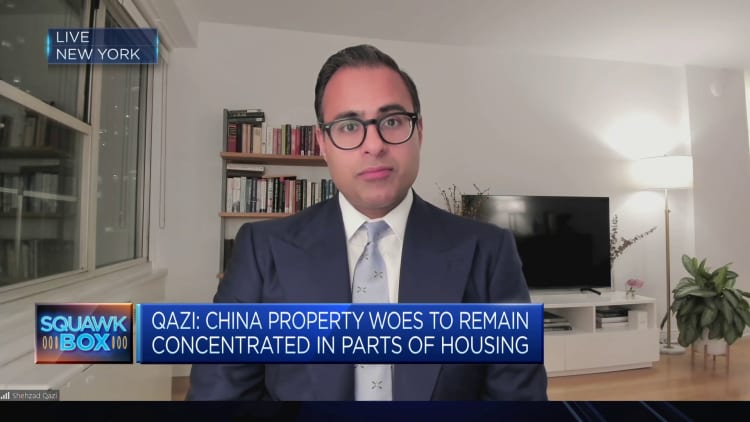
ECA International said Asia-Pacific is the only region to see real wage growth in 2023 as inflation continues to impact the global economy.
Azman | Electronic+ | Getty Images
Developing countries in East Asia and the Pacific are growing faster than the rest of the world, but growth in the region is likely to slow by 2024 due to headwinds in China and broader policy uncertainty, the World Bank said.
“The region is still outperforming the rest of the world, but relative to its potential,” Aaditya Mattoo, the World Bank’s chief economist for East Asia and the Pacific, told CNBC’s “Signpost Asia” on Monday. , its performance is not enough.”
Growth in the region is expected to slow to 4.5% this year, down from last year’s 5.1% pace, according to the bank’s latest East Asia and Pacific (EAP) data for 2024 released on Monday. The region has a population of over 2.1 billion.
However, excluding China, the region’s growth rate is expected to be 4.6% this year, up from 4.4% in 2023.
“The outlook faces downside risks, including a sharper-than-expected slowdown in the global economy, rising long-term interest rates in major economies, increased uncertainty about global economic policies, and heightened geopolitical tensions,” the report stated.
Although China has set an official growth target of about 5% in 2024, the World Bank expects growth in Asia’s largest economy to slow to 4.5% this year, down from 5.2% last year. The slowdown in the country’s economic growth has been caused by falling domestic consumer confidence, high debt levels and a sluggish real estate sector.
Mattu said all of this is causing production and investment to shift away from China, which could ultimately affect production in other countries such as Vietnam and Mexico.
“China has become extremely important to the region as a source of inputs, as a destination for final consumption of value-added products in the region, and as a source of investment,” he told CNBC.
The report emphasizes that many countries in the East Asia and Pacific region rely on external demand for export growth. The report quoted countries such as Malaysia, Thailand, Vietnam and Laos as saying: “Since the early 2000s, China’s importance as the final destination for domestic value-added in the region has increased significantly.”
“A number of countries in the region are also affected by their trade links with US and EU economic activities (Cambodia, Malaysia, Philippines, Thailand and Vietnam),” the report highlights.

There are other factors limiting growth in the region.
“Global trade is recovering, but at the same time we are seeing a lot of protectionist policies,” Mattu said.
“We are seeing some easing in financial conditions, such as the inflation beast that appears to be tamed, but at the same time we are seeing high interest rates and significantly higher debt in the region than before the pandemic.”
He added that “bold policy action” was needed to “unleash competition, improve infrastructure and reform education” to boost the region’s economy.
At the same time, if China can negotiate a transition to high-quality and sustainable growth and avoid protectionism with other countries in the region, such as Malaysia, Indonesia, the Philippines and Vietnam, it could become a powerful catalyst for economic growth. explain.
Speaking at the China Development Forum in Beijing last week, IMF Managing Director Kristalina Georgieva said “pro-market reforms” could spur China’s growth “faster than the status quo.” Much more”.





